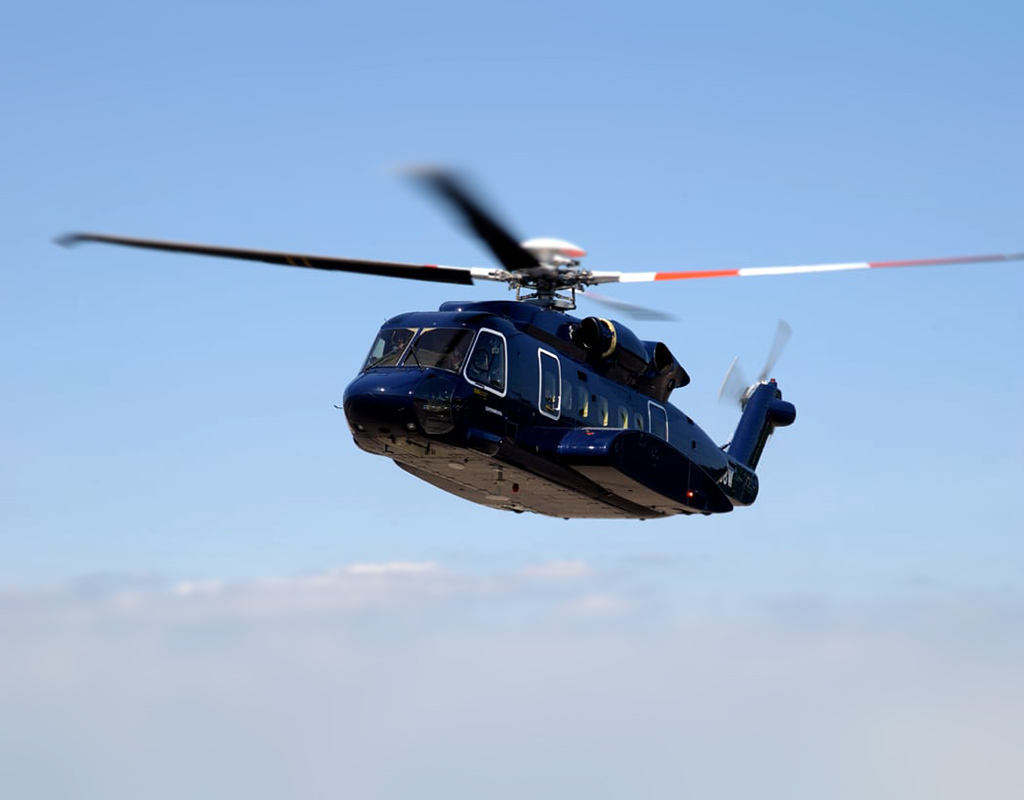
As it struggles to support the existing fleet of S-92A helicopters, Lockheed Martin Sikorsky has pushed certification of the A+ upgrade for the aircraft to 2025 while indefinitely shelving plans for a B model.
Speaking at HAI Heli-Expo 2023 in Atlanta, Georgia, four years after Sikorsky unveiled the S-92A+ and B variants at the same venue, Leon Silva, vice president of Global Commercial and Military Systems, said that both decisions were “market-driven.”
“There’s no reason why we couldn’t have finished that certification earlier,” Silva said of the A+ kit, which includes an enhanced Phase IV main gearbox that exceeds the run-dry certification requirements for transport category rotorcraft.
“We have done a majority of the development; what remains on the A+ kit is some certification work that at this point, honestly from a technical perspective, is low risk. So we’ve been in the position of being able to throttle that, and match that to the need of the marketplace,” he said.
Lacking a stronger pull from the market, “we think that 2025 is a good match for what the expectations are,” Silva said. As for the S-92B variant, which included “some changes to the airframe that were pretty intrusive” — including enlarged cabin windows and a common cabin door suitable for offshore and search-and-rescue (SAR) configurations — “we have actually honestly seen limited interest in that from the marketplace,” he said.
“What we’ve done is we’ve essentially packaged it, put it on the shelf, we’ve done all that preliminary work. So if at some point it becomes of bigger interest, we will be able to extend that, but we don’t have any plans right now to build the S-92B.”
The S-92 has been in high demand with the recent rebound of the offshore oil-and-gas market, which according to Silva accounts for around 86 percent of the model’s flight hours. It now holds a dominant position in that market following the exclusion of its only direct competitor, the Airbus H225, after a fatal crash resulting from a main gearbox failure in 2016.
Silva said the global fleet of more than 300 S-92 helicopters is now seeing some of the highest utilization in its history, on the order of 13,000 flight hours per month. Along with that, however, have come severe challenges in supporting the aircraft, a complaint echoed to Vertical by multiple industry sources.
“We have challenges with respect to the availability of some parts, and we’ve been very transparent about that,” Silva acknowledged at Heli-Expo. “Covid along with some of the other attributes, including the war in Europe, has put pressure on the supply chain, not only on materials, but suppliers’ ability to react to ordering. And we experienced a spike in the usage of the S-92 in particular.”
Silva said availability numbers for the S-92 — the percentage of time an aircraft can be dispatched as required — are currently in the “high 80s,” compared to a typical availability rate “in the mid 90s.” At the current operational tempo, that could translate to up to 1,000 hours per month of lost flight time across the worldwide fleet.
“Keeping these aircraft flying as often as they have to fly to stay productive for our customers is very, very important,” Silva said, noting that Sikorsky has been collaborating with both customers and suppliers as it works to address parts shortages. The company has also co-located its supply chain team with the rest of its support team in Trumbull, Connecticut, “almost in an emergency center in order to optimize communication and be able to move as quickly as possible.”
“Our recognition at the end of the day is that we don’t succeed at Sikorsky unless our customers fly,” Silva said. “Our agendas are very, very well aligned, and that’s what we’ve focused on.”
Silva said that Sikorsky remains optimistic about the S-92’s prospects as the current fleet ages, as “the best aircraft to replace an S-92 is an S-92.” Following the closure of its facility in Coatesville, Pennsylvania, which housed the final assembly lines for the S-92 and S-76, Sikorsky has been building S-92s in West Palm Beach, Florida, where it currently has five of the heavy twins under assembly for SAR and VIP customers.
Long term, Silva said, Sikorsky has multiple options for locating the S-92 assembly line. The company is currently taking orders for new-build aircraft with a two- to three-year lead time, with most of those helicopters expected to incorporate the A+ upgrade as line fit.
Silva confirmed that Sikorsky has ceased taking orders for the S-76, a decision it announced at last year’s Heli-Expo in Dallas, Texas. He said the company continues to explore options for the future of the model.
“We’re not ready to . . . announce anything, but we are exploring other concepts and the possibility of maybe partnering with somebody and maybe targeting different markets than what historically the S-76 has done,” he said. “So in the background, we are definitely considering some alternatives.”

